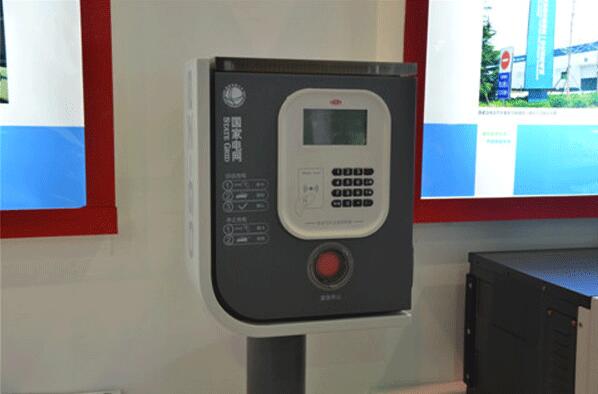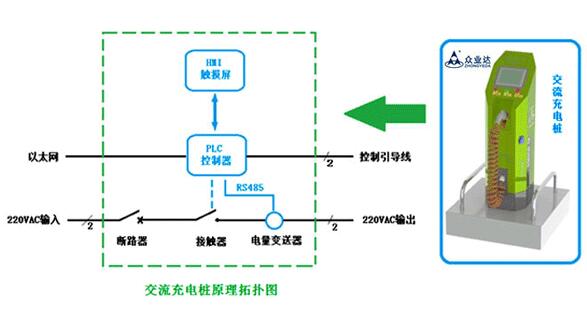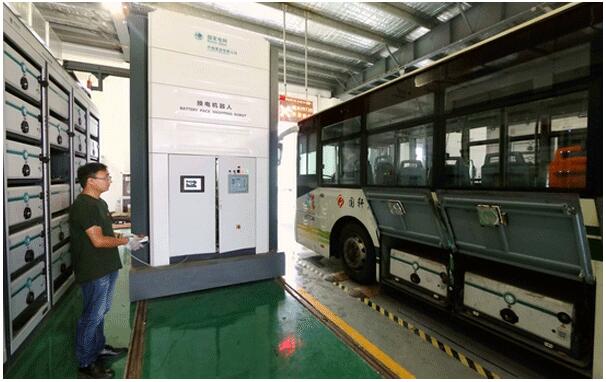With the continuous advancement of our smart grid construction, electric car charging equipment is a typical device for smart grid electricity consumption, which is characterized by wide distribution, large electricity load, and distributed energy nodes. Electric vehicle charging equipment has initially realized the interactive features of the smart grid, which has effectively promoted the construction and development of China's smart grid. Therefore, the construction of electric vehicle supporting facilities is the key to realizing the industrialization of electric vehicles. The electric vehicle charging facilities constructed at this stage mainly include: AC charging piles, charging stations and battery replacement stations. The AC charging pile is mainly fixed on the ground. The electric vehicle that it targets is mainly used to provide AC power for an electric vehicle with an on-board charger to realize the charging process. General common installations are in public buildings such as office buildings, public parking lots, large shopping malls, residential community car parks or some power stations. Charging piles are special devices for charging electric passenger cars. Nowadays, many public transport companies are implementing full electric vehicles. Future electric vehicles and charging equipment will become more common. Under normal circumstances, the construction scale of the charging station, the expansion of the industry's installed capacity and the number of charging equipment are mainly divided into large, medium and small categories. The power distribution capacity of a typical large-scale charging station is not less than 10 sets of 500 kVA charging equipment. The medium-sized charging station requires no less than 100 kVA capacity and no less than 3 charging devices. Small-sized charging stations require less than 100 kVA of power distribution and no less than three charging devices. Charging stations are relatively costly, so commercialization of electric vehicles also requires more complete infrastructure. The battery exchange station mainly uses a fully charged power battery to replace the battery pack with insufficient battery power, so as to realize rapid replenishment of the electric energy of the electric vehicle. This method is by far the most time-efficient method, can effectively reduce the charging time, but also can provide professional maintenance of the battery to extend its life, but also effectively improve the efficiency of the use of vehicles, generally applicable to install similar The use of power battery vehicles. The era of electric vehicles has come. In the future, new energy will be gradually developed and charging equipment will become increasingly perfect.
Tilting disc check valves produce slightly more pressure drop than swing check valves of the same size. These check valves have a single-piece disc without a hinge. In response to flow forces, the disc pivots about hinge pins that are located within the geometry of the disc and slightly above the center-line of the valve body. Due to the disc rotating onto the seat, the sealing surfaces must be conical. Some tilting disc check valves include a counterweight on the disc, dramatically increasing the disc stability with lower flow rates.
Tilting disc check valves were designed specifically to minimize the potential for high-energy water hammer. This objective is accomplished by locating the disc center of rotation a short distance from its pivot point, thus allowing the disc to quickly close with flow stoppage or flow reversal. Although it is best to size this valve to be fully open, the disc is reasonably stable under some less than full-open flow conditions.
Tilting Disc Check Valve, Wafer Check Valve, Flanged Check Valve Manufacturer, Cast Steel Check Supplier, Non-return Valve Manufacturer, Tilting Check Valve Wenzhou Kolink Valve Co., Ltd. , https://www.kolinkvalves.com

